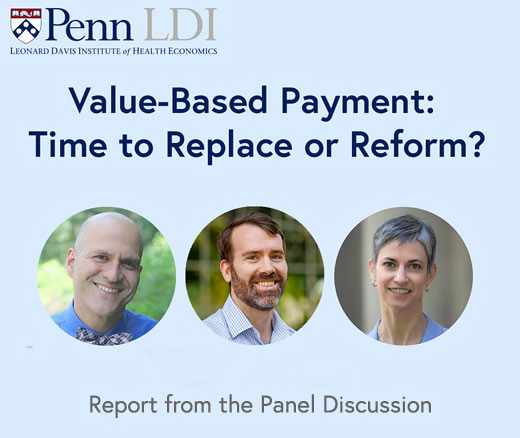
How to Make Health Care Affordable: What Democrats Should Do Next
An LDI Expert Offers Five Cost Control Measures As Congress Continues Its Affordability Debate
Health Care Payment and Financing
Blog Post

The Skilled Nursing Facility Value-Based Purchasing Program failed to meet its goal of reducing 30-day hospital readmissions, according to research published in June 2025 by LDI Senior Fellows Robert Burke, Atul Gupta, LDI Executive Director Rachel M. Werner, and colleagues.
In a follow-up study, the team found that the size of the financial incentives in the nursing home program were small. This may contribute to the program’s lack of success.
Each year, the program levies penalties of up to 2% of all Medicare fee-for-service reimbursement or grants bonuses of up to 3% of these reimbursements based on nursing homes’ 30-day hospital readmission rates.
While the program paid out more than $571 million to over 14,000 facilities from 2019 to 2021, most incurred a penalty, with a median loss of $10,336.
However, the impact on individual nursing homes represented only 0.15% of the average net operating income per facility.
This is in sharp contrast to a similar hospital initiative, which has been considered a success. That program imposed an average annual penalty of over $160,000 per hospital. Burke and colleagues note that the absolute amount of money nursing homes gain or lose may be insufficient to motivate operational changes that would lead to a reduction in hospital readmissions.
The authors also found year-to-year variability of the rewards and penalties, which may further undermine the program. Even if a facility received a large bonus one year, it could not count on similar rewards the following year.
The work adds to a debate among experts who disagree about the effectiveness of value-based payment programs in health care. In an LDI-sponsored debate on Nov. 7, Andrew Ryan, a leading health policy researcher at Brown University, argued that value-based payments had failed and should be abandoned.
On the other side of the debate was Farzad Mostashari, CEO of Aledade Inc., a company that helps physician practices improve quality. He believes that holding physicians accountable for their performance is key saving money and improving quality.
The study, “Size of the Financial Incentives in Medicare’s Skilled Nursing Facility Value-Based Purchasing Program,” was published September 2, 2025 in JAMA Network Open by Robert E. Burke, Franya Hutchins, Jonathan Heintz, Syama R. Patel, Scott Appel, Julie Norman, Atul Gupta, Liam Rose, and Rachel M. Werner.


An LDI Expert Offers Five Cost Control Measures As Congress Continues Its Affordability Debate

A New Review Finds Hospital Mergers Raise Prices Without Improving Care, and Urges Regulators to Stop Accepting Quality Claims to Justify Consolidations

CMS’s Main Risk Adjustment Method Underestimates Rural Patients’ Health Risks, LDI Fellows Show, Potentially Reducing Access to Care in the Heartland

Penn LDI Debates the Pros and Cons of Payment Reform

Moving from Fee-for-Service to Risk-Based Contracts Hasn’t Dramatically Changed Patient Care, Raising Questions About How to Make These Models More Effective

Government Regulatory Power Wanes as Power Accrues to Courts and Corporations